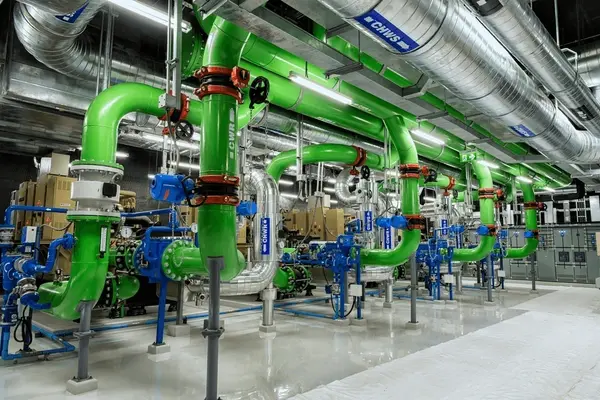Absorption chiller
Absorption chillers are innovative cooling systems that utilize a heat source to drive the cooling process, making them energy-efficient and environmentally friendly. These chillers are commonly used in commercial and industrial settings to provide cooling solutions while reducing electricity consumption. By leveraging the principles of absorption refrigeration, these chillers offer a sustainable alternative to traditional vapor compression systems. With their ability to operate on a variety of heat sources such as natural gas, waste heat, or solar energy, absorption chillers are versatile and adaptable to different applications. Explore our range of absorption chillers to discover efficient and eco-friendly cooling solutions for your business.

What is Absorption chiller?
An absorption chiller is a type of cooling system that uses heat energy, such as steam or hot water and waste heat to drive the cooling process. This technology is often used in industrial and commercial applications to provide air conditioning or refrigeration and cooling purposes. Absorption chillers are known for their energy efficiency and environmentally friendly operation, making them a popular choice for sustainable cooling solutions.
Applications
In terms of applications, absorption chillers are commonly used in
- Industrial processes
- Commercial buildings
- District cooling systems
where waste heat or other low-grade heat sources are available. They are also suitable for areas with limited electricity supply or where reducing electricity consumption is a priority.
Benefits
- Energy efficiency: Absorption chillers can be powered by waste heat, natural gas, or other low-grade heat sources, making them more energy efficient than traditional electric chillers.
- Environmentally friendly: Absorption chillers have lower greenhouse gas emissions compared to electric chillers, making them a more environmentally friendly cooling option.
- Quiet operation: Absorption chillers operate quietly, making them suitable for noise-sensitive environments.
- Long lifespan: Absorption chillers have fewer moving parts than electric chillers, leading to a longer lifespan and lower maintenance costs.
- Flexibility in fuel sources: Absorption chillers can run on a variety of fuel sources, providing flexibility in choosing the most cost-effective and sustainable option.
- Scalability: Absorption chillers can be easily scaled up or down to meet varying cooling demands, making them a versatile choice for different applications.
FAQ
Frequently asked questions
Absorption chillers can be powered by various energy sources, including natural gas, waste heat, steam, hot water, or solar energy. The most common energy sources for absorption chillers are steam, natural gas and waste heat.
The components of an absorption chiller typically include:
- Generator: This is where the refrigerant is heated and vaporized.
- Absorber: Here, the refrigerant vapor is absorbed into a liquid absorbent.
- Condenser: The high-pressure refrigerant vapor is condensed into a liquid.
- Evaporator: The low-pressure liquid refrigerant evaporates and absorbs heat from the chilled water.
- Pump: Moves the absorbent solution between the absorber and generator.
- Heat exchangers: Transfer heat between the refrigerant and absorbent solution.
These are the main components of an absorption chiller.
Absorption chillers are commonly used in industries where waste heat or steam is readily available, making them more energy-efficient than traditional mechanical chillers. Some industries that commonly use absorption chillers include:
- Food and beverage processing
- Chemical and petrochemical
- Pharmaceutical
- Paper and pulp
- Textile
- Hospitals and healthcare facilities
- Data centers
- Universities and research institutions
These industries benefit from the energy savings and environmental advantages offered by absorption chillers.